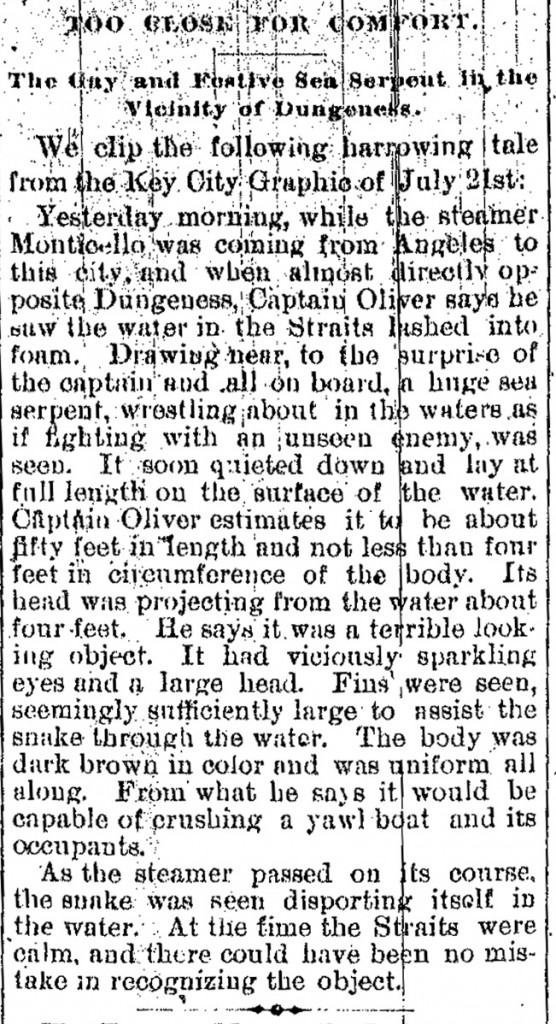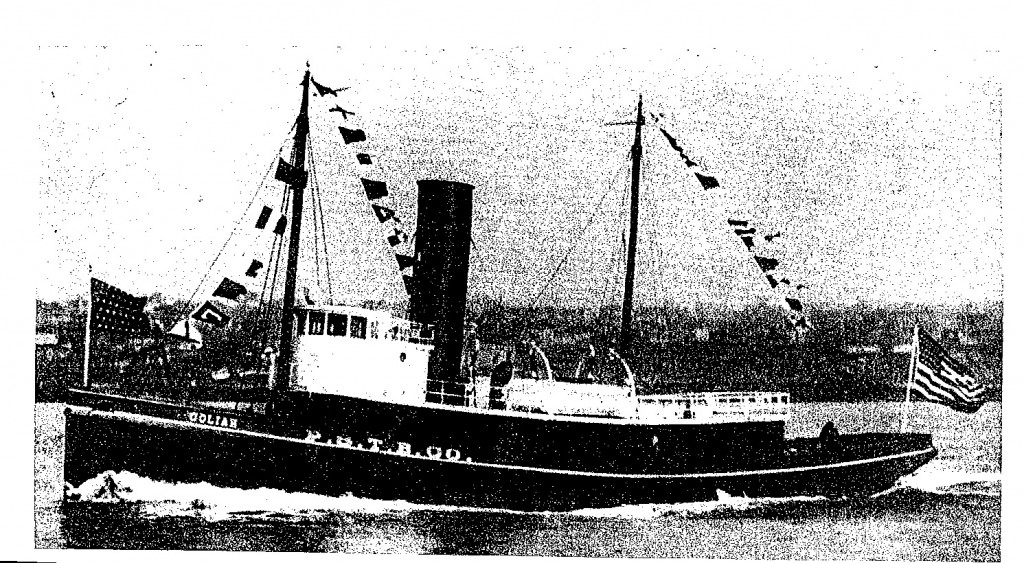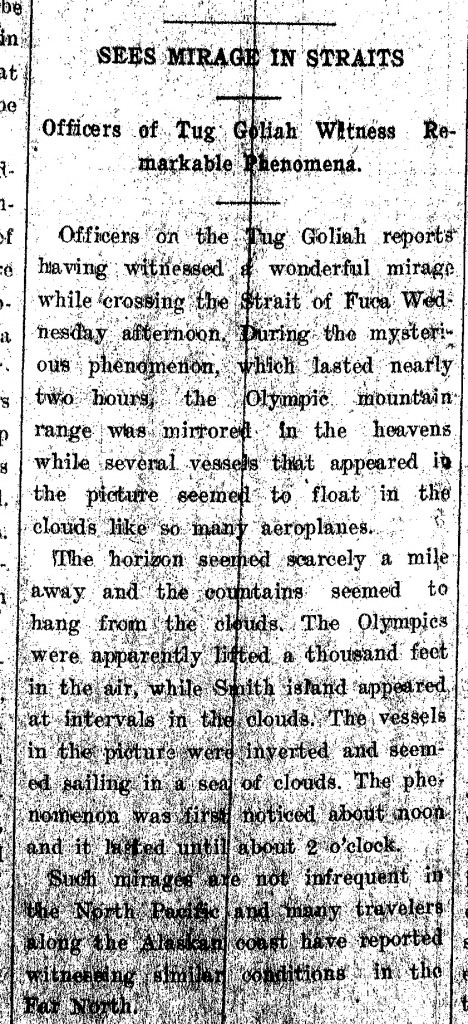 From the desk of Steve Willis, Central Library Services Program Manager of the Washington State Library:
From the desk of Steve Willis, Central Library Services Program Manager of the Washington State Library:
Shortly after losing the status of Clallam County seat in an election in 1890, many in the town of New Dungeness picked up and moved across the river forming a community called, interestingly enough, Dungeness. This new hamlet even had an optimistic (although short-lived) newspaper: The Dungeness Beacon.
The following item was found at random in the July 29, 1892 issue, reprinted from Port Townsend’s Key City Graphic:
TOO CLOSE FOR COMFORT.
The Gay and Festive Sea Serpent in the Vicinity of Dungeness.
“We clip the following harrowing tale from the Key City Graphic of July 21st:”
“Yesterday morning, while the steamer Monticello was coming from Angeles to this city, and when almost directly opposite Dungeness, Captain Oliver says he saw the water in the Straits lashed into foam. Drawing near, to the surprise of the captain and all on board, a huge sea serpent, wrestling about in the waters as if fighting with an unseen enemy, was seen. It soon quieted down and lay at full length on the surface of the water. Captain Oliver estimates it to be about fifty feet in length and not less than four feet in circumference of the body. Its head was projecting from the water about four feet. He says it was a terrible looking object. It had viciously sparkling eyes and a large head. Fins were seen, seemingly sufficiently large to assist the snake through the water. The body was dark brown in color and was uniform all along. From what he says it would be capable of crushing a yawl boat and its occupants.”
“As the steamer passed on its course, the snake was seen disporting itself in the water. At the time the Straits were calm, and there could have been no mistake in recognizing the object.”
Sea serpent reports in the Strait of Juan de Fuca in general and Dungeness in particular have a long history. L.E. Bragg in Myths and Mysteries of Washington describes a sea serpent that was seen so frequently in the Strait in the 1930s that the citizens of Victoria gave it a name: “So many came forward after these reports were published that editor Archie Wills of the Victoria Daily Times held a contest to name the sea serpent. The winning entry was ‘Cadborosaurus,’ or ‘Caddy’ for short, named for Cadboro Bay just north of Victoria where it had been seen. Even after limiting reports to those that were signed and verified, Wills compiled a list of around 100 people, including three sea captains and the pilot who flew the mail between Seattle and Victoria, who had seen the beast.”
But I’d like to propose a new name for the serpent, at least for the one who hangs around the Washington State side of the Strait:
DungeNessie.








